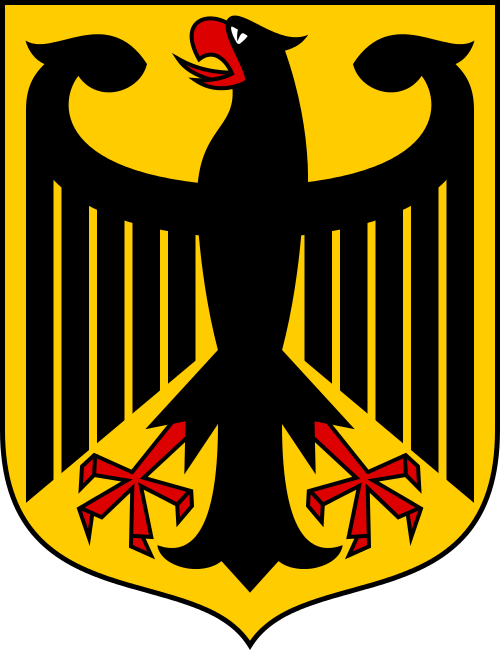Coat of arms of Germany

Perhaps for many Russians, the coat of arms of Germany is associated with not very pleasant, if not tragic, memories of the Second World War, since its main image is an eagle, one of the most formidable feathered predators of the planet. Fortunately, the bird depicted on the state symbol of the Federal Republic of Germany has outwardly significantly transformed. And now it looks not threatening, but solemn and powerful.
The main details of the coat of arms
On the main official symbol of Germany, only the eagle is present; its image is placed on a golden shield. The bird itself, with outstretched wings, is drawn in black, and its beak, tongue, paws and claws are scarlet. According to heraldic principles, the eagle's head is turned to the right.
Sometimes you can find just an image of a black eagle with scarlet details. In the absence of a shield, the bird can no longer be called the coat of arms of Germany, the name "federal eagle" is allowed. The regulation, approved in January 1950, contained a description of the federal coat of arms and the federal eagle. And the drawing was approved only two years later (by the way, it is a copy of the coat of arms of Germany, approved in 1928).
Leafing through the pages of history
The eagle is a symbol of the sun, courage and vitality. This is the meaning that was attached to this bird in the mythology of different peoples and countries. Even during the reign of Charlemagne, the coat of arms of the Holy Roman Empire appears, on which there is a well-known combination of colors and symbols: a gold background; black Eagle.
True, in the 15th century, the emperor's symbol, the eagle, had a second head and a single crown placed on top. It was this image of the bird that was preserved on the coat of arms of the Austro-Hungarian Empire, and in 1848 it appeared on the state symbol of the German Reich, in contrast to various kingdoms and duchies, where there could be lions, bears, crowns, fortresses and keys.
The eagle took its permanent place on the symbols of Germany both during the united German Reich (until 1918) and the Weimar Republic, which replaced the Reich and existed until 1933. The Nazis, in order to intimidate, added a swastika and an oak crown, this symbol looked too gloomy.
The modern coat of arms of the Federal Republic of Germany is an exact copy of the German symbol, introduced in 1928. And the drawing was invented even earlier, in 1926, by Tobias Schwab. True, experts say that the tail of the modern German eagle is shorter. The proud and formidable bird settled for a long time on the main state symbol of Germany and is not going to share such an honorable place with anyone..


